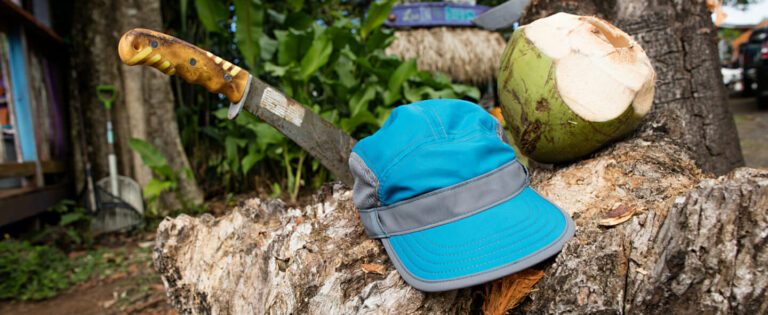Yep, it sure is strange: the thing is called bivouac tent, but it is neither a bivvy bag nor a tent. But the name works, anyway, because it’s a pretty good hybrid between the two. Even though the solution for closing the gap between the two is rather obvious in retrospect, the outdoor industry took their precious time before becoming active in this area. Surprisingly, bivouac tents have only been on the market for about ten years now, and the selection has remained relatively small to this day. So, despite the outdoor boom, bivouac tents are still a niche product.
What did the manufacturers do in terms of construction to close the gap between tents and bivvies? Well, they added poles and pegs to the bivvy bags so that you can set it up and secure it to the ground. Seems easy enough, right? Well, not exactly. The difference between a “luxurious” bivvy bag, or bivouac tent and a simple 1-person tent is often not that clear.
The standard construction of a bivouac tent
The traditional construction of a bivouac tent consists of a synthetic fabric cut similar to that used for a bivvy bag, but with a tougher, more durable base. A bivouac tent also has an arched pole at the head and the foot end of the bivvy. These poles are really what differentiates a bivouac tent from a bivvy bag. The arch at the foot end is smaller than that at the head of the bivvy, and both are much smaller than those you’d find in a conventional 1-person tent. While a tent has enough space for you to sit down relatively comfortably, a bivouac tent does not. The material will hang down pretty close to your face, even when you’re lying down. The amount of guy line points is slightly less than you’d find on a “proper” tent, but the guy lines and pegs are the same.
Who should use bivouac tent?
As with all outdoor products, the answer depends on a variety of different factors, including the trip you’re planning and your personal needs and desires. But, let’s get a little more specific: bivouac tents are definitely more geared toward solo adventurers who want to be fast and flexible and don’t mind sacrificing comfort in the process.
A while back, I was travelling in Patagonia with the Vaude Bivi (which has unfortunately been discontinued) and was very happy with its overall performance. I felt I was getting excellent value for money. But, I have to admit that the unusual good weather made it possible for me to spend several nights out in the fresh air, so I didn’t have use the rather cramped space all too often. I don’t mean to sound negative. After all, bivouac tents aren’t meant to be particularly inviting, but rather designed to serve for a particular purpose!
If you’re going on a trekking or cycling tour in a group of two, then you will be better off with a “proper” tent. Trying to share an already cramped bivouac tent with a fellow adventurer who undoubtedly smells just as bad as you (and probably worse 😉 ) is certainly not the bee’s knees – even if you are more than just friends. And, even if each of you pack a 1-person bivouac tent, there’s really no advantage in terms of weight and pack size over a two-person or multi-person tent, which is significantly more comfortable. Of course, there are exceptions; one of which being travelling in steep, high alpine terrain, where you tend to find several smaller places to sleep rather than one large spot for a tent.
For groups of more than two people the same basically applies, but these groups have a third option: group bivouac shelters with walking poles as a brace. And, the British brand Rab offers just that with their high-quality Group Shelter 2. Equipped with recesses in the roof to use walking poles as a brace, this bivvy bag may be designed for only two people, but it is so light and compact that a group could easily take several of them on a trip.
Before your first night in a bivouac tent: what is there to consider?
The short distance between the single-walled fabric and your body is definitely something you should consider when choosing a sleeping bag. If the sleeping bag is too thick, it will rub up against the single-layer tent wall. This will cause moisture to be “pulled“ from the outside to the inside and then into the sleeping bag. In windy conditions, the tent wall will be pressed up against the sleeping bag even more (at least when it’s Patagonian wind combined with continuous rain, as I had the pleasure of experiencing). That being said, you should only sleep in bivouac tents if you have a water-repellent or, even better, a waterproof sleeping bag. Your clothing should be resistant to water as well. But, remember: You should test all of this beforehand in a safe environment. Don’t just head out and hope for the best.
Important features a bivouac tent should have are strong, smooth-sliding zips (preferably YKK) and high-quality, brand-name synthetic fabric that is breathable as well. Speaking of zips, keep in mind that longer zips may very well make getting in and out of the tent significantly easier, but they have some disadvantages as well. They not only slightly increase the overall weight of the tent but also constitute weak points in combating extreme weather. You should also make sure that the guy line points are nice and strong. Lastly, some bivouac tents have intersecting poles that can be set up without guying out, if necessary, which can be a very nice feature to have.
Differences between a tent and a bivouac tent
Advantages of a bivouac tent
- Less weight and a smaller pack size.
- Requires less space, giving you more options when setting up camp.
- Quicker assembly and disassembly, so you can relocate in case of unforeseen complications (e.g. if your camp gets flooded or too cold).
- You can take the bivouac tent all the way up to the top of a mountain without much effort and be prepared for sudden weather changes. A huge advantage for longer adventures.
Disadvantages of a bivouac tent
- You have nowhere to cook in bad weather (unless you take a tarp or something similar with you – but that would increase both weight and volume of your pack so much that you may as well take a “proper” tent instead).
- Other activities are pretty uncomfortable in bad weather as well (e.g. you can’t sit upright and eat in a bivouac tent – you have to do it lying down). Going to the toilet, changing your clothes or getting stuff out of your pack is a nuisance. But, on the plus side, you can read and plan the rest of your trip relatively comfortably.
- Your rucksack has to stay outside – unless it’s really small and you are too! The same goes for your wet boots.
Differences between a bivouac sack and bivouac tent
Advantages of a bivouac tent
- More space and more comfortable, giving you better chances in the event of an accident and emergency situations (especially in high alpine terrain).
- Much better protection from wind and water because the shell is further away from the body.
Disadvantages of a bivouac tent
- More space necessary. A bivvy bag can be spread out everywhere. You can’t do that with a bivouac tent.
- More weight and larger volume.
Hopefully, you have gained some insight into bivouac tents, what they are, what they’re best used for and what to look out for when buying one. If you want to find out even more about bivouac tents, you should check out our Base Camp post on bivvy bags and tents.








